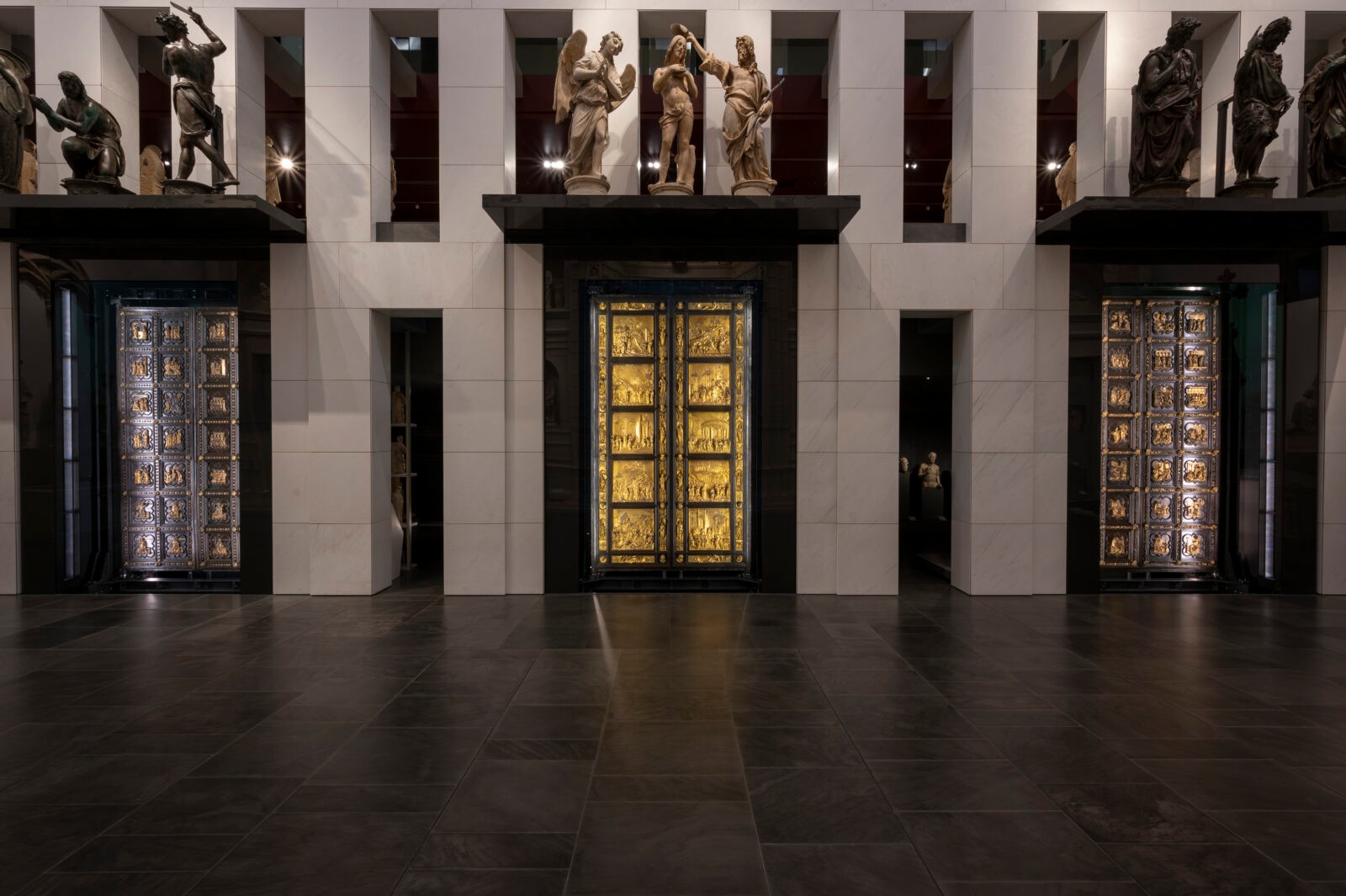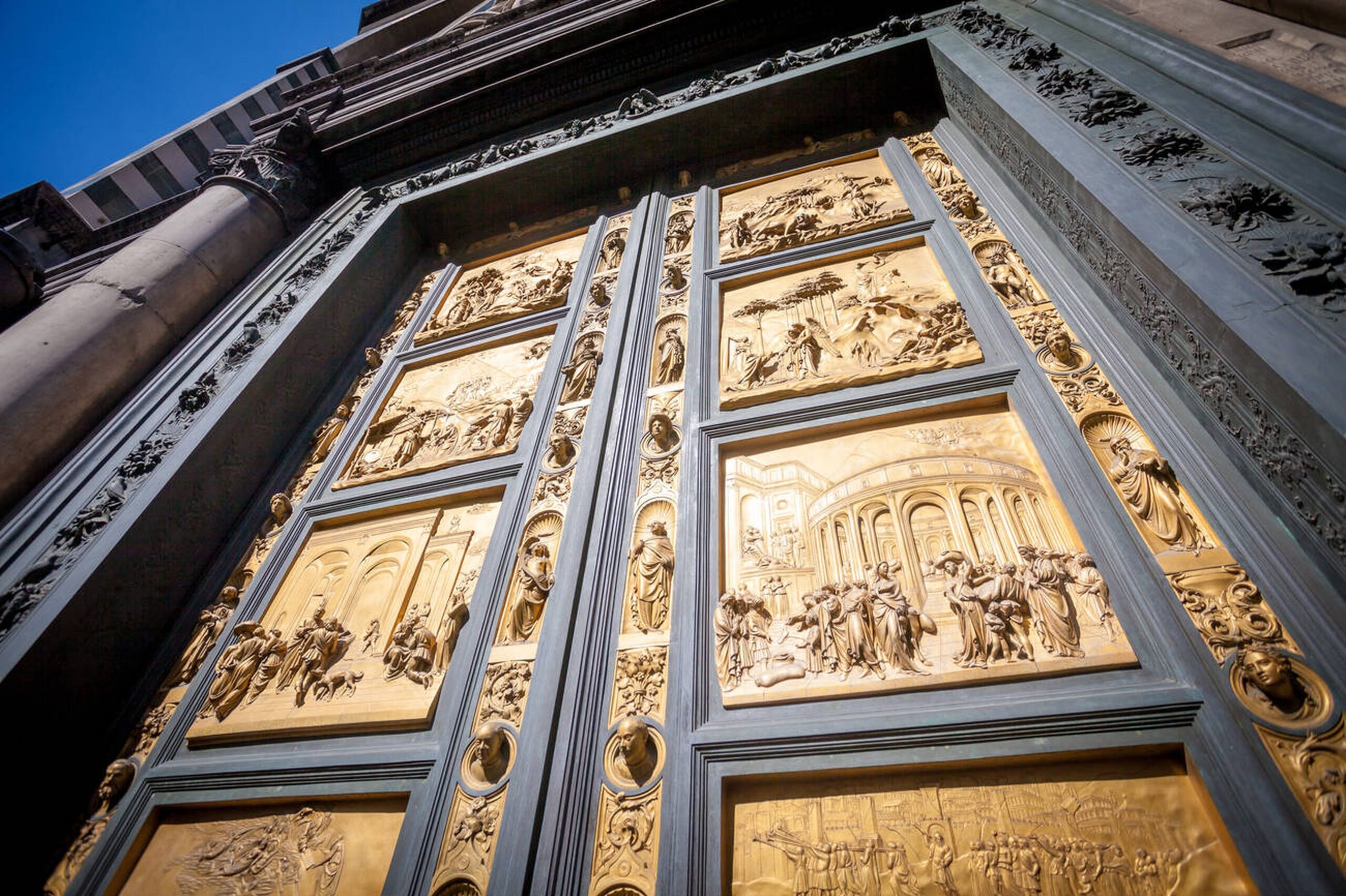Highlights: Baptistery Doors Florence, Gates of Paradise Ghiberti, Museo dell’Opera del Duomo, Florence Renaissance art, Lorenzo Ghiberti Florence, Florence travel guide
Looking Back: When the Gates of Paradise Returned
It’s hard to believe that more than ten years have passed since I first wrote about one of Florence’s most moving moments — the long-awaited return of Lorenzo Ghiberti’s “Gates of Paradise” to public view. That was back in September 2012, when the city celebrated the unveiling of the restored bronze doors at the Museo dell’Opera del Duomo.
Even then, it felt historic — a day Florence had awaited for twenty-seven years. Now, revisiting those words from 2012, I find myself filled with the same admiration, but also a deeper appreciation for how carefully this city preserves its treasures.
Today, the doors remain safely housed in the Museo dell’Opera del Duomo, their luminous panels still protected by advanced conservation systems that maintain a nitrogen-rich atmosphere to prevent oxidation. The museum itself, too, has evolved since 2012 — with redesigned galleries, innovative lighting, and interpretive displays that make the story of Florence’s Cathedral complex more vivid than ever.

Remembering the Restoration
In 2012, the excitement was palpable. After nearly three decades of meticulous work, Ghiberti’s gilded bronze doors — once damaged by the 1966 flood — were finally revealed again. Commissioned by the Arte di Calimala, Florence’s prestigious cloth merchants’ guild, between 1425 and 1452, they were the final and most celebrated of the three monumental Baptistery doors.
The phrase “Gates of Paradise,” coined by Michelangelo himself, captures their brilliance perfectly. Each of the ten panels tells a story from the Old Testament, using high and low relief, scientific perspective, and architectural details inspired by classical Rome. This was Ghiberti’s Renaissance vision — merging faith, beauty, and the science of space and form.
If you’re standing in front of the Baptistery today, the doors you see gleaming in the Tuscan sun are replicas, installed in 1990. The originals are protected inside the museum, sealed in their climate-controlled glass enclosure. The technology may be modern, but the emotion they inspire is timeless.


The Museo dell’Opera del Duomo: Then and Now
Back in 2012, I described the Museo dell’Opera del Duomo as “one of the great gems of Florence.” That still holds true — but since its major renovation in 2015, it has become even more extraordinary. The museum now offers a beautifully curated journey through the art and architecture of the Cathedral complex.
Housed in what was once the Cathedral’s workshop — where Michelangelo sculpted his “David” — the museum remains a sanctuary of Renaissance genius. Today’s visitors can still marvel at:
- Michelangelo’s Pietà, a work of both pain and transcendence.
- Donatello’s Mary Magdalene, whose wooden form radiates a haunting grace.
- The Silver Altar of St. John the Baptist, glittering with Florentine devotion.
- And of course, Ghiberti’s original bronze doors, whose golden surfaces tell stories that feel alive.
The museum’s new layout allows these masterpieces to breathe, inviting viewers to walk slowly, to see the interplay of light and craftsmanship, and to imagine Florence as it was in the 1400s — a city buzzing with creativity.


Ghiberti’s Enduring Brilliance
Revisiting my notes from 2012, I’m reminded of the awe I felt describing Ghiberti’s self-portrait — his thoughtful face cast in bronze, a modest smile, his son Vittorio beside him. It was as if he were peering across time to meet us, proud of his life’s work.
He once described his creation as “fashioned with marvelous skill” — and who could disagree? His panels are not merely art objects; they are storytelling in metal, full of movement and humanity. Every detail, from the sweep of a robe to the reflection of gold on bronze, speaks to the Renaissance belief that divine beauty can exist in earthly form.

Reflections Across Time
Re-reading that 2012 post reminds me why I do what I do — sharing Italy’s treasures, not only through art history, but through the emotions they still evoke. The Gates of Paradise continue to inspire awe, just as they did when they were first unveiled centuries ago, and again when we saw them restored more than a decade past.
If you plan to visit Florence soon, don’t miss the chance to see them inside the Museo dell’Opera del Duomo. Take your time. Let your eyes adjust to the glow of the gilding. You’ll see the Renaissance not as something distant, but as something still alive — breathing quietly behind glass, in the heart of Florence.

